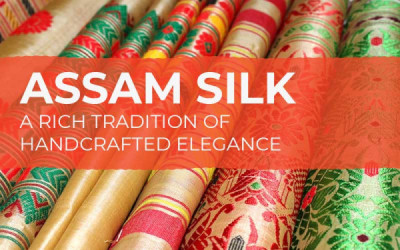Detailed Notes
Types of Assam Silk:
-
Muga Silk: Known as the “Golden Silk of Assam”, famous for its natural golden-yellow shine and longevity. It has a Geographical Indication (GI) tag and is found only in Assam.
-
Eri Silk: Often called the “peace silk” because it is produced without killing the silkworm. It is warm in winter, cool in summer, and highly sustainable.
-
Pat Silk: A fine, white or off-white silk with a glossy texture, widely used for traditional Assamese attire like Mekhela Sador and sarees.
History and Cultural Importance:
-
Assam has been weaving silk for centuries, with references found in ancient scriptures and royal patronage.
-
Traditional attires made of Assam Silk, such as Mekhela Sador, are worn during festivals, weddings, and cultural ceremonies.
-
It forms a vital part of Assam’s economy, with places like Sualkuchi known as the “Manchester of Assam” for its large-scale silk weaving industry.
Conclusion:
Assam Silk is not just a fabric but a living tradition that represents Assam’s artistry, culture, and pride. With its three unique varieties – Muga, Eri, and Pat – Assam Silk continues to hold global recognition as one of India’s most precious handloom heritages.
